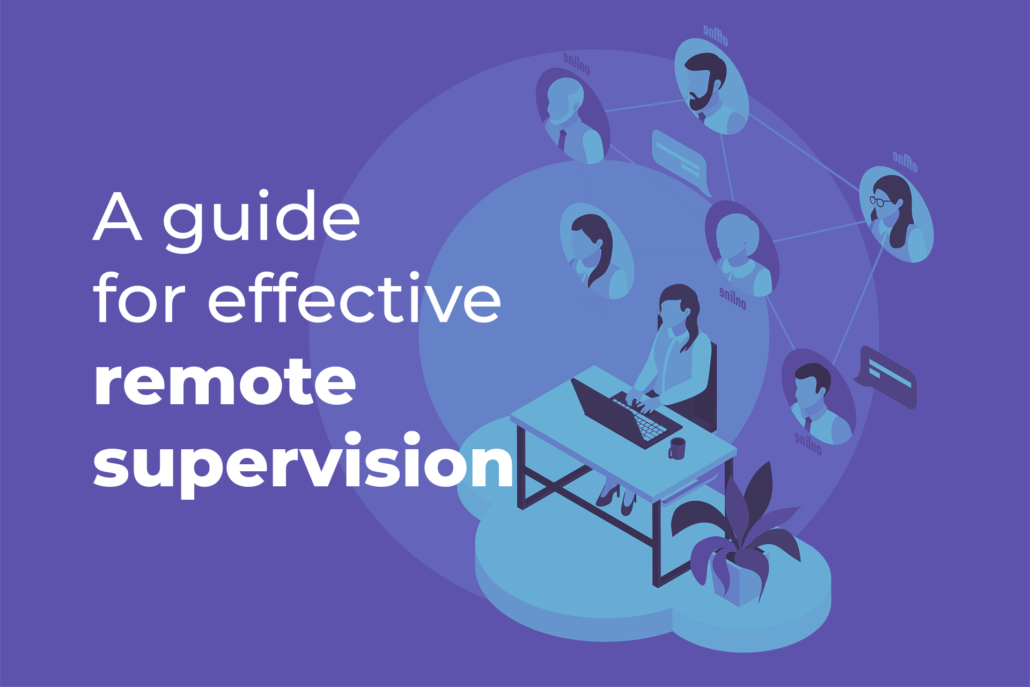Compliance monitoring in remote work

Remote work is gaining momentum across the world. It’s difficult to say how many companies have adopted remote work since the pandemic crisis began, but Gartner researchers provide some insight in one of their recent surveys.
There are several advantages to adopting remote working, but the process has its challenges. It takes effort to stay connected when you are not physically there with your coworkers, team members, or colleagues, and with a little innovation and creativity, you can maintain high productivity and engagement with your employees.
Some Pointers on Managing a Remote Team
Choose The Right Infrastructure
To achieve the speed and agility required for a smooth transition office to WFH you may have to consider technology infrastructure that can support the flexibility needed, e.g. cloud-based contact center and customer communication and collaboration solution.
Use team Collaboration Tools.
Collaboration tools strengthen the team dynamic and build stronger bonds between employees who may not meet in person.
Establish New Rules Of Meaningful Employee Engagement
According to a survey published in The Wall Street Journal, one of the most important criteria that distinguishes successful organizations from others is that they provide employees the feeling of belonging.
A study reveals those who work from home complete their jobs 39 percent faster than those who work in an office workspace. Employers must, however, create clear and quantifiable goals for their remote staff to set them up for success.
Adopt Remote Monitoring Tools
With most communication happening through text or video calls, this leads to massive data build-up and challenges in supervision.
The use of physical surveillance and phone monitoring is not feasible in the WFH scenario. Instead, employers must adopt AI-based quality assurance and compliance monitoring.
Track employee activities, goals, and rest parameters using tools and analytics. AI-driven quality assurance systems are one of the essential ways to manage remote employees.
Misconduct is not limited to customer-facing interfaces only; instead, inter-employee communication is also critical for detecting misuse.
Provide Personalized Feedback
Leaderboards are fantastic, but nothing matches one-on-one feedback. Supervisors should set aside time to engage with employees through video and evaluate client interactions, reinforcing appreciation and telling them that individual performance counts.
Building connections and resolving disputes through active listening is achievable when you align technology and communication. The goal is to include mediums that give a plethora of info and communication cues.
Optimize Upskilling With AI-driven Tailored Learning
Use a variety of distance learning strategies that have been proven to be the greatest fit for each employee using AI models. This includes video, team roleplays, and gamified learning.
Avoid Micromanaging employees And Instead Macro-manage Customer Experience.
While it’s disappointing to lose direct visibility into how employees spend their time when they work from home, top-line CX measures like C-Sat and NPS can be useful. Shift the focus on daily customer support KPIs for your organization, such as interaction quality and customer happiness.
Conduct Risk Monitoring And Control
It is necessary to design a conduct risk strategy. A risk-based supervision paradigm with a balanced scorecard is essential.
All channels should be included, as well as real-time risk insights compared to commitments and a risk-based supervision approach. Humans in the loop are critical, and AI must be implemented. As AI is used in compliance risk, ethics, biases, and transparency are all essential.
Promote A Positive Culture
Harsh controls are futile. Culture should be the focal point. Culture and creativity necessitate some face-to-face connection. This is crucial for long-term organizational efficiency because it fosters mutual understanding and a feeling of shared identity.
According to Gartner, by 2023, fewer than one-third of digital employees will prefer to work in an office setting.
The most effective approach to successfully managing this continuing predicament and preparing for another crisis is to embrace cloud technology– specifically SaaS platforms.
Businesses that invest in their people, policies, and technology to support remote work facilities will reap significant benefits in the short and long term.
